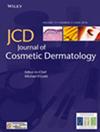Facial Thread Lifting Complications
Abstract
Background
Thread lifting is a minimally invasive technique for addressing facial aging and skin laxity. Despite its popularity, it carries risks of complications ranging from minor bruising to severe structural injuries. Comprehensive understanding of these complications is vital for optimizing outcomes.
Aims
To analyze the complications associated with facial thread lifting, provide insights into their underlying mechanisms, and propose effective management strategies to minimize risks.
Patients/Methods
A comprehensive review of complications from thread lifting was conducted, focusing on patient outcomes and procedural challenges. Data from clinical studies, case reports, and expert recommendations were analyzed to identify common and severe complications. Advanced techniques, such as ultrasound-guided procedures, were evaluated for their efficacy in preventing complications.
Results
Common complications included bruising, pain, swelling, bleeding, and dimpling, often arising from improper technique or anatomical factors. Severe issues such as infection, granuloma, thread migration, nerve damage, and parotid gland injuries were less frequent but posed significant challenges. Management strategies included massage, saline or filler injections, botulinum toxin, and surgical interventions for persistent or severe cases. Ultrasound-guided techniques demonstrated efficacy in reducing risks, particularly for glandular and vascular injuries.
Conclusions
While thread lifting offers a promising alternative to surgical facelifts, its success depends on precise technique, anatomical knowledge, and effective complication management. Preventive measures, including preoperative planning, proper thread placement, and patient-specific customization, are crucial. Future advancements in imaging technologies and thread materials will likely enhance safety and efficacy, ensuring better patient satisfaction and outcomes.


 求助内容:
求助内容: 应助结果提醒方式:
应助结果提醒方式:


